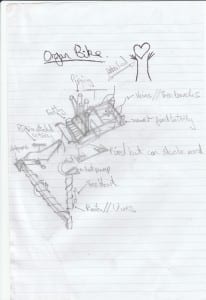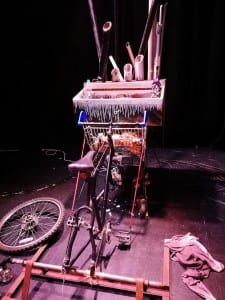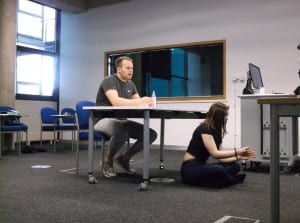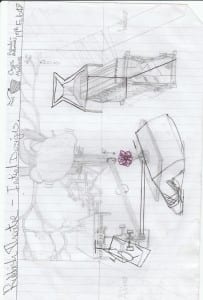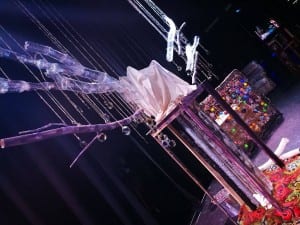As the dramaturge for our play, If An Orchid Was All You Had, I worked along side our director Jacob Kay to map out, create, and justify the logic of the world of our play. This was a complicated task as our play ultimately consists of three worlds. The real world in which our audience lives in, the world in which our central character The Man lives in, and the internal world which is imagined inside The Man’s head. Initially this idea of separate worlds was confusing, especially when the worlds start to collide. Myself and Jacob had a meeting to carefully create rules we as a cast and crew needed to follow and consider while crafting our performance.
The World of the Audience: This is the world we all live in, the world in which we woke up and brushed our teeth. The world in which we went to work, and the world in which we chose to go to the theatre. This is real life, however real life and the fictional world of The Man intertwine during the installation when the audience get to walk around the set. It’s an opportunity for the audience to feel a part of The Man’s world and see what he sees.
The World of The Man: This is The Man’s reality, where he spends his time day to day. When he is tending to his orchid he is in his real world, and The Bike represents his menial daily tasks he has to complete.
The World of the Mind of The Man: This is the world which complicates the production slightly. This is the internal world of The Man where The Creatures reside. The Creatures are extensions of The Man’s inner-psyche. Their world is powered when The Man is on The Bike which is connected to The Tree. The Creatures can only enter from The Tree because of this connection it has to The Man. The Creatures demonstrate The Man’s madness.
As the play goes on, The World of The Man and The World of the Mind of The Man start to seep into each other. Slowly The Creatures are able to start entering his regular world, showing that he no longer can escape his madness, it is consuming him. However, The Man does not see The Creatures, it is their disruptive presence which is detrimentally effecting The Man.

